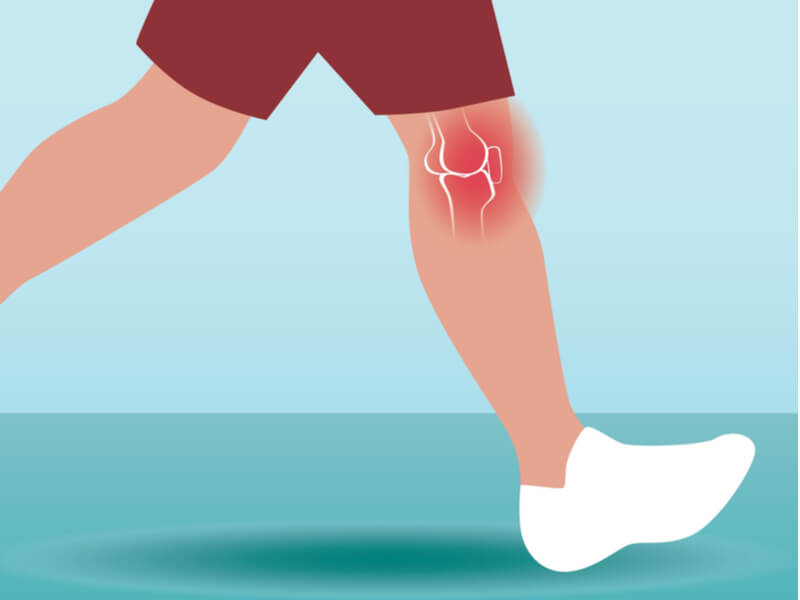
Have you ever heard of a disease called "rheumatoid arthritis"? I think there are various images such as painful joints and difficulty in moving joints.
This time, we will explain the symptoms and treatment of the disease "rheumatoid arthritis", which is dangerous if left untreated.
table of contents
What kind of disease is rheumatoid arthritis?
Rheumatoid arthritis is a chronic disease in which inflammation occurs in the synovial membrane that covers the joints due to an abnormal autoimmune reaction in the body.
Inflammation in the synovial membrane causes chronic joint inflammation, pain and swelling in the affected area, and the joints do not function well, resulting in structural abnormalities.
As a result, it is a scary disease that restricts daily life and limits participation in social activities.
In rheumatoid arthritis, it is believed that the immune system, which is supposed to protect itself, malfunctions and attacks the joints, causing pain and inflammation.
At present, it is a systemic autoimmune disease that is said to affect about 1% of the population in Japan. It is said
■Why does it occur?
In fact, the exact cause of the disease is still unknown today.
Apparently, it is thought to develop due to a complex combination of congenital genetic factors and surrounding environmental factors.
Genetic factors are involved in about 10% of the causes, and smoking history is considered important from the perspective of onset risk (environmental factors). Other than that, there are multiple factors such as periodontal disease.
Imaging tests are mainly performed using X-rays, and the affected limbs are actually photographed to determine whether the surface of the bone is chipped or missing, and whether the distance between the bone gaps is shortened.
■ Initial symptoms
What are the symptoms of rheumatoid arthritis?
Describe the early symptoms of rheumatoid arthritis.
Commonly known symptoms of rheumatoid arthritis include joint stiffness, joint pain, and joint swelling. In addition, joint stiffness is a condition in which a joint does not move as expected.
Pain can occur anywhere in the joints of the body, but it tends to occur especially in the joints of the wrist and fingers, often with multiple locations. There are many things.
If the condition progresses, joint deformation, joint dislocation, and other changes will occur, such that the joint becomes stiff and stiff, making it difficult to bend and stretch.
Furthermore, when inflammation becomes severe, systemic symptoms such as fever, general malaise, weight loss, and anorexia may be accompanied, leading to significant restrictions on daily life.
■ Treatment
Treatments for rheumatoid arthritis include drug therapy and surgical therapy.
Each treatment method has advantages and disadvantages, and which one to choose depends on the severity of the disease, the presence or absence of complications, and the degree of inconvenience such as how much it interferes with daily life. You will have to make a decision based on
~ Improving lifestyle habits ~
First of all, it is important to understand what rheumatoid arthritis is, and to lead a regular lifestyle, including eating habits, while considering the balance between moderate exercise and rest. Non-smoking is also required.
~Drug therapy~
Drug therapy is the mainstay of treatment for rheumatoid arthritis, and is used to suppress inflammation in the joints of rheumatoid arthritis patients and improve symptoms.
Treatments include anti-rheumatic drugs and biologics.
This biologic is a new drug created by improving components such as proteins produced by living organisms.
It is said that there are about eight types of biologics that can be used as therapeutic agents for rheumatoid arthritis.
In terms of biologics, it is said to be remarkably effective in suppressing joint destruction, making it possible to improve and maintain the symptoms of rheumatoid arthritis to a milder state.
~Surgery~
Some patients may choose surgical treatment such as artificial joint replacement or synovectomy if functional impairment due to joint deformity remains as a sequela despite various treatments such as drug therapy. I have.
■Summary
Rheumatoid arthritis is a progressive disease that should not be ignored once the initial symptoms are experienced.
In general, the destructive changes in joints in rheumatoid arthritis have been found to progress rapidly within about two years of onset.
Once destroyed, cartilage and bone joints cannot be restored to their original normal state, and daily life may be restricted, so early diagnosis and early treatment are extremely important.
If you feel discomfort in your joints, consult a specialist medical institution as soon as possible.
Supervision: Dr. Yasushi Tsuda
